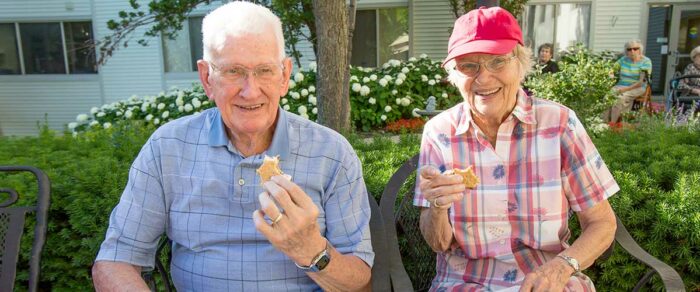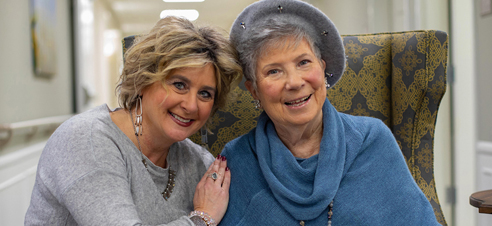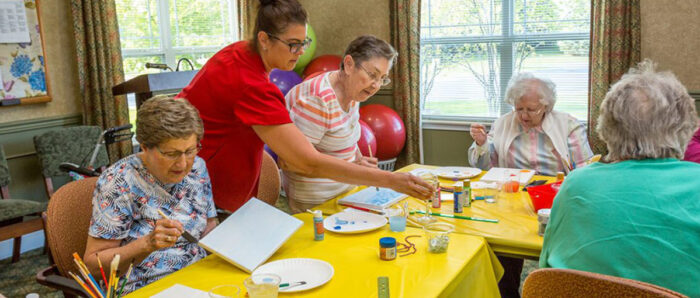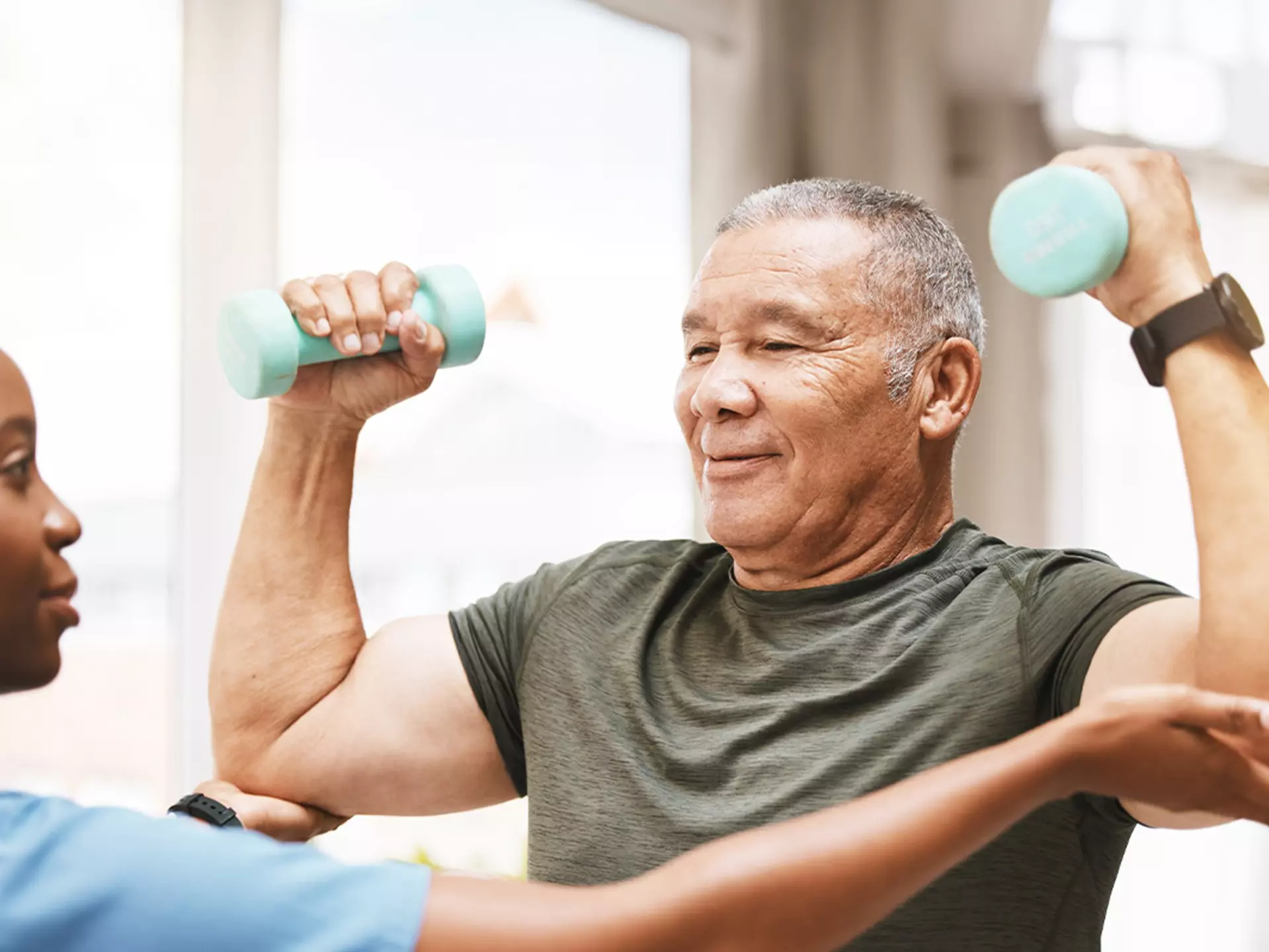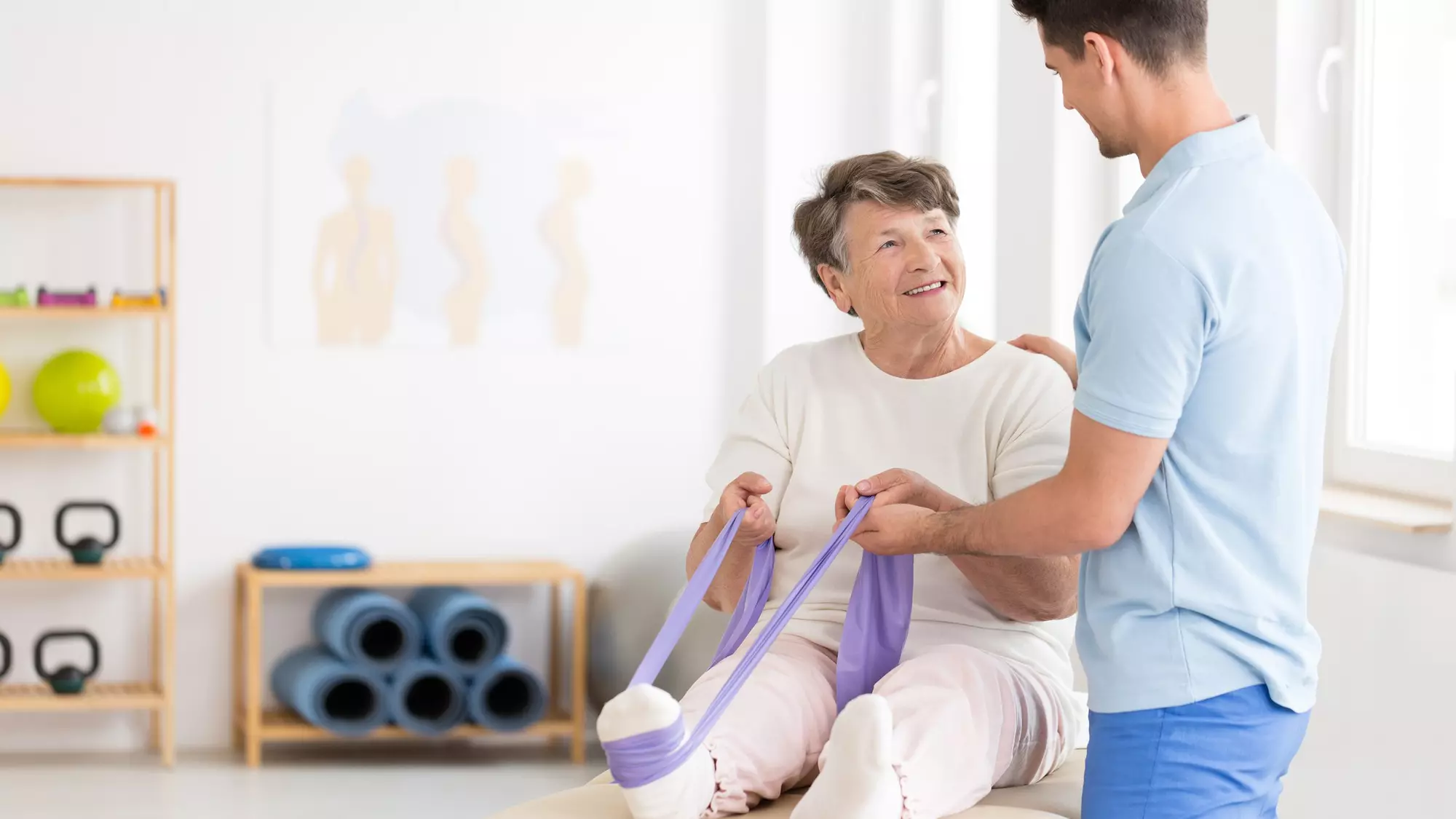According to recent studies, building and maintaining muscle mass can offer tremendous benefits as we age. Yet research shows that people who don’t engage in any physical activity may lose 3 to 5% of their muscle mass over each decade of their life after 30. Over time, this process, known as sarcopenia, can affect an individual’s mobility, strength, and stability, which are key to maintaining independence later in life.
Fortunately, evidence suggests seniors can build and maintain muscle tone regardless of age or fitness level. However, due to normal changes that sometimes come with age, seniors over 60 typically have different exercise, recovery, and nutritional requirements than younger adults.
In this blog, we’ll cover what you need to know about building muscle after 60, including safe exercises to add to your routine and handy tips for staying consistent and motivated throughout your fitness journey.
Why Building Muscle After 60 Matters
Aside from helping you look and feel your best, building muscle after 60 can have valuable, long-lasting benefits, including:
- Supporting Mobility: Muscles are key for supporting everyday functional movements, including mobility and transferring. Therefore, building and maintaining muscle strength can help older adults maintain a higher quality of life as they age.
- Helping Slow Down Sarcopenia: Sarcopenia is the natural, gradual loss of muscle mass as we age. Along with healthy lifestyle habits, maintaining strong muscles can help support overall health and quality of life for seniors.
- Weight Management: Building muscle after 60 can also help seniors maintain a healthy weight, which may be particularly important for managing or even preventing conditions like type 2 diabetes, heart disease, high blood pressure, and osteoarthritis.
- Improving Bone Density: Our bone density also tends to decline with age, increasing the risk of falls for older adults. Building muscle mass after 60 usually involves regular strength training, which has been shown to help support bone health.
- Enhancing Cognitive Function: Building muscle is closely associated with improved brain function and a reduced risk of cognitive decline and dementia, particularly in older adults.
- Promoting Longevity and Independence: Lastly, staying active and maintaining strong muscles can help seniors continue doing the things they love for longer without needing assistance.
How Our Bodies Change After 60
It’s natural for our bodies to change as we age. While every senior’s experience is unique, many people over 60 begin to notice common effects of aging, such as:
- Joint and back pain from years of use
- Weaker and less flexible muscle fibers, making movement feel stiffer
- Hormonal changes, especially in women during and after menopause
- Slower recovery times after exercise or physical activity
- Lower energy levels compared to younger adults
- Reduced bone density, which can increase the risk of fractures
- A slower metabolism, which can make weight management more challenging

How to Build Muscle After 60
Now that you know the benefits of keeping your muscles strong, you may wonder if you can gain muscle after 60. Or, what helps build muscle after 60? Older adults can continue to build and maintain muscle well into their 60s and beyond. Still, you may need to make a few health and lifestyle adjustments, including:
Strength Training
Many experts agree that light strength training is one of the best ways to build and maintain muscle mass and overall strength as we age. Even if you haven’t worked out in a while, there are plenty of gentle exercises you can try. While a gym membership can be helpful, many workouts need little equipment and can be done right at home. Here are a few worth exploring:
- Chair Squats: Chair squats are perfect for helping strengthen the main muscle groups in your legs (quads, hamstrings, and glutes), which are important for maintaining independence and mobility as you age.
How to perform:- Stand in front of a sturdy chair with your feet shoulder-width apart.
- Slowly bend your knees and push your hips back, as if you’re going to sit in it.
- Lightly touch the chair with your bottom, but don’t fully sit down if you can.
- Press through your heels to stand back up.
- Repeat 5–10 times, resting if needed.
- Wall Push-Ups: Like regular push-ups, wall push-ups strengthen the muscles in the chest, arms, and shoulders and help with everyday pushing movements like closing doors or pushing yourself up from a seated position. The key difference is that this variation is done standing against a wall for support, which helps take pressure off the wrists and shoulders.
How to perform:- Place your hands flat on the wall, shoulder-width apart.
- Keep your body straight and engage your core.
- Bend your elbows and slowly lean your chest toward the wall.
- Push back to the starting position.
- Repeat 5–8 times.
- Seated Dumbbell Curls: This is a classic arm-strengthening exercise done while seated. Adding it to your routine can help build your biceps (the front of the arms), which are important for lifting and carrying. You’ll need a sturdy chair (preferably without wheels), light dumbbells, or water bottles if dumbbells aren’t available.
How to perform:- Sit upright with feet flat on the floor.
- Hold a dumbbell in each hand with arms hanging by your sides, palms facing forward.
- Slowly bend your elbows and lift the dumbbells toward your shoulders.
- Slowly lower the weights back down.
- Repeat 5–8 times.
- Seated Rows With Resistance Band: Strengthening the muscles in your back can improve posture and help protect you from injuries and back pain. This pulling exercise uses a resistance band to target your upper back, shoulders, and arms.
How to perform:- Sit tall with your legs extended and band secured.
- Hold one end of the band in each hand, arms straight out in front of you.
- Pull the band back toward your waist, squeezing your shoulder blades together.
- Slowly return to the starting position.
- Repeat 5–8 times.
- Farmer’s Carry: The Farmer’s Carry is a full-body strength exercise that involves walking while holding weights at your sides. It helps build strength for daily activities like carrying groceries, laundry, or bags.
How to perform:- Hold one weight in each hand at your sides, palms facing inward.
- Stand tall with your shoulders back and your core engaged.
- Walk slowly and steadily for 10–20 seconds.
- Rest, then repeat 2–3 times.
There are plenty of exercises that help strengthen and stimulate your muscles. The key is adding a few strength training exercises you’re comfortable with to your fitness routine and performing them consistently over time. Here’s an example routine to guide you:
| Day | Activity | Exercise / Notes | Sets x Reps |
|---|---|---|---|
| Monday | Strength Training | Chair Squats | 2–3 sets of 5–10 reps |
| Wall Push-Ups | 2–3 sets of 5–8 reps | ||
| Seated Dumbbell Curls | 2–3 sets of 5–8 reps | ||
| Warm-Up / Cool-Down | 5–10 minutes each | ||
| Tuesday | Active Recovery or Mobility work | Gentle walking, yoga, or tai chi | 15–20 minutes |
| Wednesday | Strength Training | Seated Rows with Resistance Band | 2–3 sets of 5–8 reps |
| Farmer’s Carry | 2–3 x 10–20 seconds | ||
| Wall Push-Ups | 2–3 sets of 5–8 reps | ||
| Warm-Up and Cool-Down | 5–10 minutes each | ||
| Thursday | Rest or Light Activity | Optional light walking or gentle stretching | 10–15 minutes |
| Friday | Strength Training | Chair Squats | 2–3 sets of 5–10 reps |
| Seated Dumbbell Curls | 2–3 sets of 5–8 reps | ||
| Farmer’s Carry | 2–3 x 10–20 seconds | ||
| Warm-Up and Cool-Down | 5–10 minutes each | ||
| Saturday | Active Recovery or Mobility Work | Walking, swimming, tai chi | 15–20 minutes |
| Sunday | Rest | Full rest or light stretching | - |
Nutrition for Muscle Growth
Seniors often ask, “What should I eat to gain muscle after 60?” According to experts, healthy and balanced nutrition is beneficial at any age. Eating enough lean protein is especially important when building muscle after 60. Therefore, you should try to include more protein-packed foods like turkey, eggs, fish, and lean beef into your diet to help ensure your body gets the protein it needs to build and maintain muscle.
Timing and protein distribution matter too. Instead of eating most of your protein in one meal, spread it across breakfast, lunch, and dinner. Breaking up your meals can provide a steady supply of energy throughout the day and help your body better use the protein for muscle repair and growth.
Some older adults may struggle to meet their daily nutritional needs through food alone. In these cases, supplements can be helpful. For example:
- Whey protein can be beneficial for individuals who may struggle to get enough protein from food alone.
- Creatine may help boost strength and energy during workouts.
- Magnesium is good for muscle function and recovery.
- Vitamin D may help support bone health and muscle function.
Before starting any supplement, it’s always a good idea to check with your doctor to make sure it’s safe for you.
Recovery and Rest
When it comes to building muscle after 60, rest and recovery are just as important as your strength training exercises. In fact, it’s during recovery and rest that your body heals and your muscles actually grow stronger.
It’s a good idea to always start every session with a gentle warm-up, like marching in place or light stretching, to prepare your muscles and joints and reduce the risk of injury. Similarly, it’s often helpful to cool down afterward, with slow stretching or walking, to help your body transition back to a resting state and reduce soreness.
Your muscles need time to recover between workouts, so plan at least one rest day between sessions. These don’t have to be completely inactive days — you can do light walking or gentle stretching to keep your body moving without overworking your muscles. Finally, numerous studies show that getting adequate sleep plays a huge role in muscle recovery. Sleep allows your body to repair tissues, maintain energy, and support overall health. Experts recommend aiming for 7 to 9 hours of restful sleep each night.
A Sample Weekly Structure
Having a structured routine can help you stay consistent with your workouts. Here’s a sample structure to help guide you. Feel free to adjust the days to fit your schedule.
| Day | Activity |
|---|---|
| Monday | Light Strength Training |
| Tuesday | Active Recovery |
| Wednesday | Strength Training |
| Thursday | Rest or Light Activity |
| Friday | Strength Training or Optional |
| Saturday | Mobility Work/Stretching |
| Saturday | Rest |
Motivation and Staying Consistent
Building strong muscles takes considerable effort and time for younger adults and even more so for seniors. But as they say, good things take time, so you’ll need to be patient and remain consistent on your journey.
Here are some tips to help you along the way:
- Set Realistic Goals: It can be hard to know where to start, especially if you haven’t been active in a while. It’s often helpful to start small, aiming for two light strength training sessions a week, and gradually increase the intensity as you get stronger.
- Celebrate Progress: Celebrating every little achievement can provide much-needed encouragement during your journey. Rather than comparing yourself to younger years, acknowledge and cherish milestones like feeling stronger during daily tasks, gaining better balance, or recovering faster after workouts.
- Mix It Up: You’re more likely to stick to a fitness routine you enjoy. When building muscle after 60, it can be helpful to try different types of senior-friendly exercises to keep things interesting and avoid boredom.
- Listen to Your Body: Pushing yourself too hard can lead to fatigue and even increase the risk of injury. Adjust exercises to suit your comfort and ability level, and schedule regular breaks during your training sessions.
- Work With a Professional: You may also seek the help of a certified personal trainer, ideally one experienced in working with older adults. They can provide personalized guidance on how to build muscle after 60, including proper form, nutritional needs, and recovery.
- Find an Exercise Buddy: Friends make most things in life more fun, and working out is no different. Joining a senior-friendly gym or a senior living community offering fitness classes can help you build muscle after 60 and connect with new friends.
Common Hurdles and How to Overcome Them
It’s normal to face some challenges when building muscle after 60. Age-related health conditions, risk of injury, and lack of motivation can make it more challenging to stay on track.
Below are some common concerns and strategies to work through them:
“I have arthritis, bad knees, or a bad back.”
Joint pain and stiffness can make exercising a frustrating experience for some older adults. Instead of avoiding movement entirely, consider trying other exercises that are gentle on your joints. A physical therapist or doctor can also recommend safe exercises or modifications to help you strengthen your muscles without increasing your pain.
“I’m afraid of getting injured.”
This is a real concern, especially if you haven’t exercised in a while. Start slowly and always use proper form. If necessary, consider seeking guidance from a professional, like a trainer or physical therapist. It’s also important to schedule rest days between workouts to give your muscles enough time to recover and help prevent injury.
“I’m not motivated.”
Motivation can come and go, and that’s perfectly normal. One of the best ways to stay consistent is to make exercise enjoyable. Try joining a senior-friendly group fitness class, finding a workout buddy, or pairing your workouts with something you enjoy, like listening to music or walking outdoors. Lastly, don’t be shy about celebrating each small achievement, like lifting more weight or just showing up for your session!
Let StoryPoint Group Be Your Guide
At StoryPoint Group communities, our residents’ needs, and their well-being, are at the heart of everything we do. Whether you’re looking for a lively community with life-enriching amenities and programs, extra help with activities of daily living (ADLs), or simply a welcoming place to call home, we’re here to help you make the most of each day, your way.
To learn more about what it’s like to live with us or just to say hello, schedule a tour of a StoryPoint Group community near you or give us a call at 1-844-275-9990.



